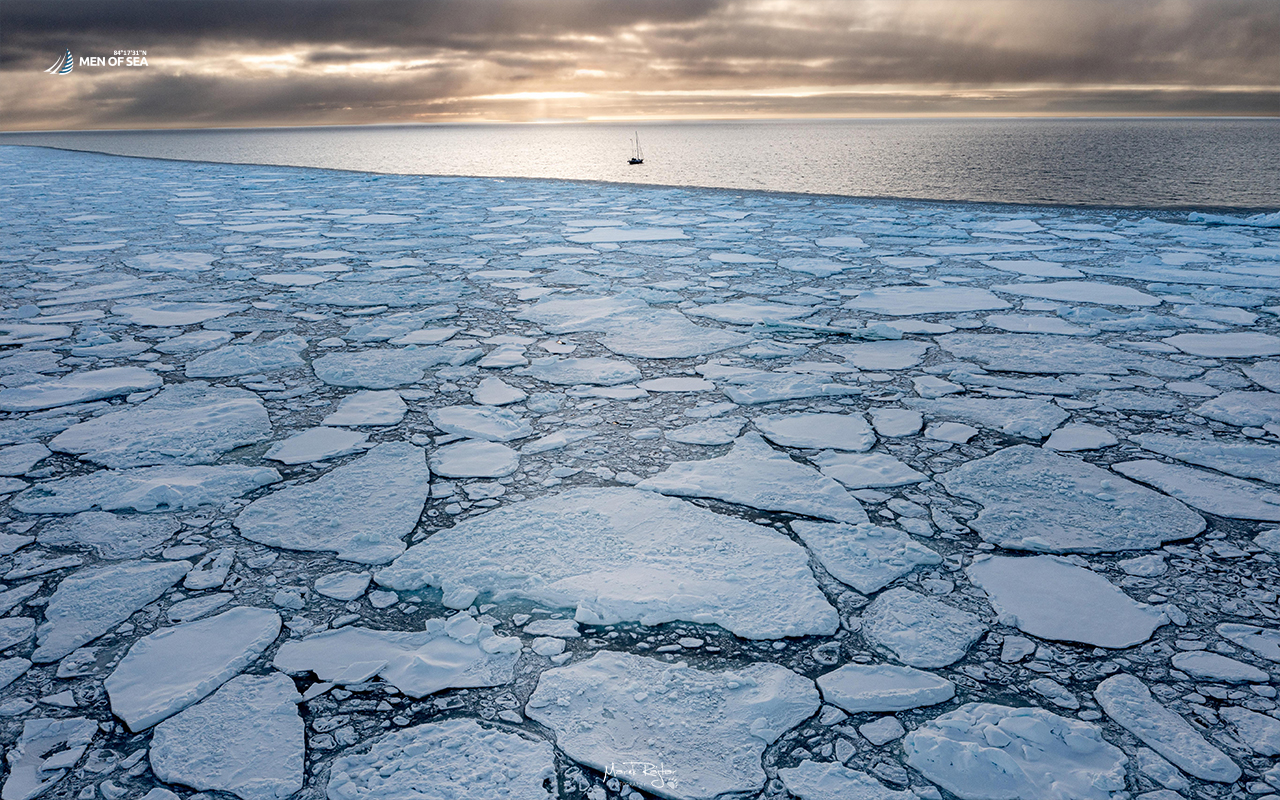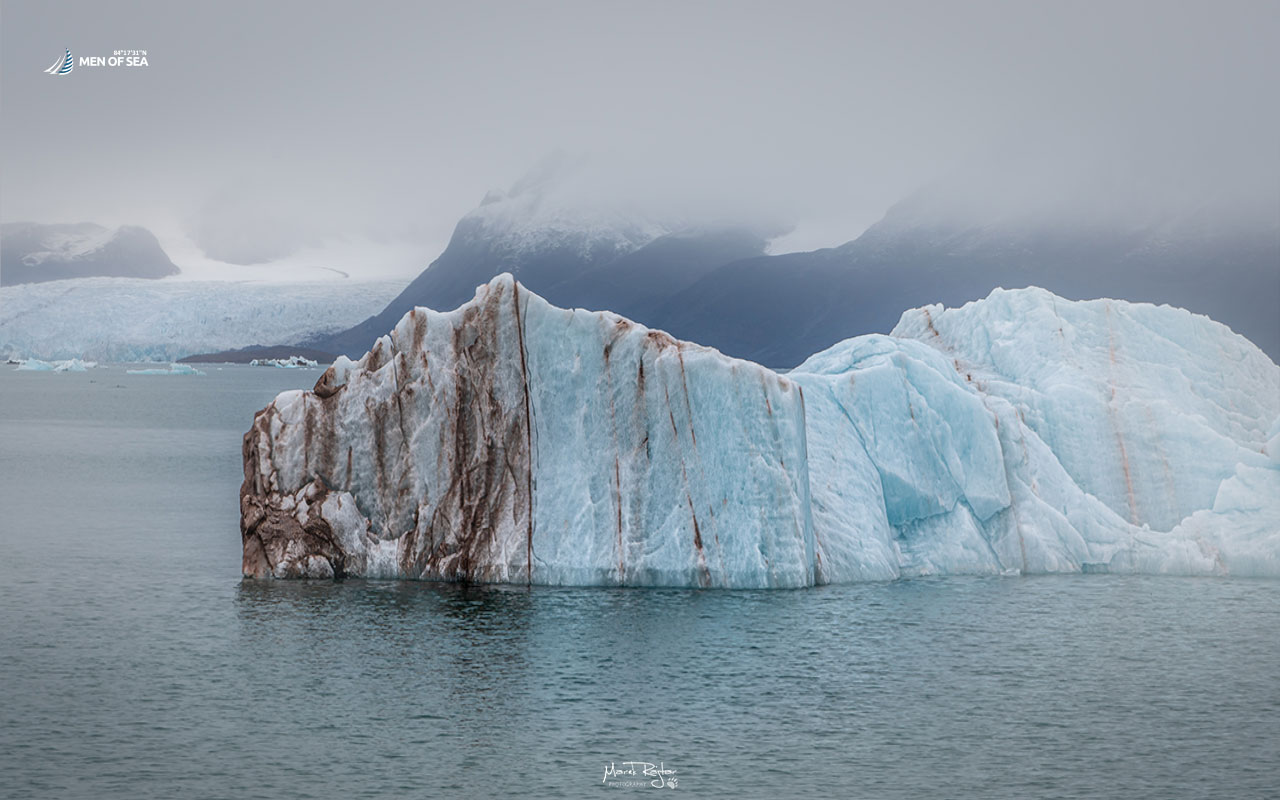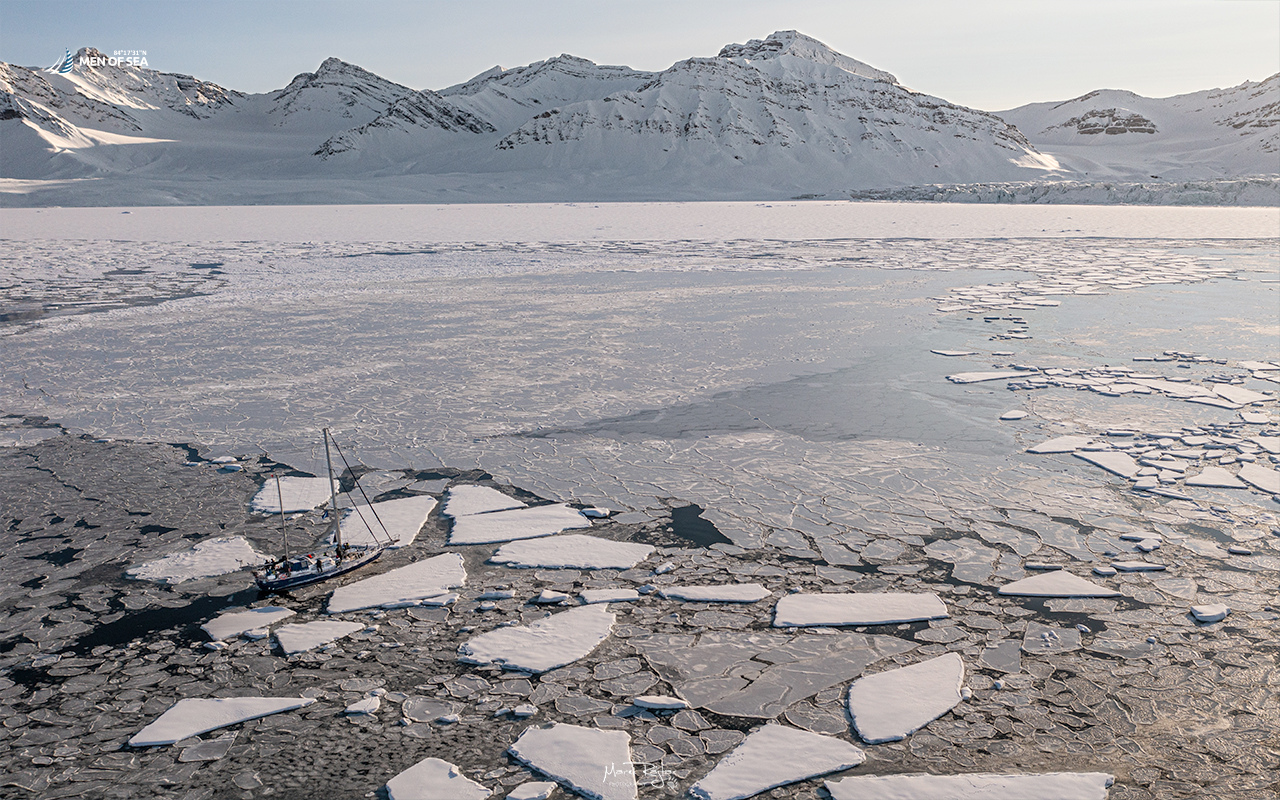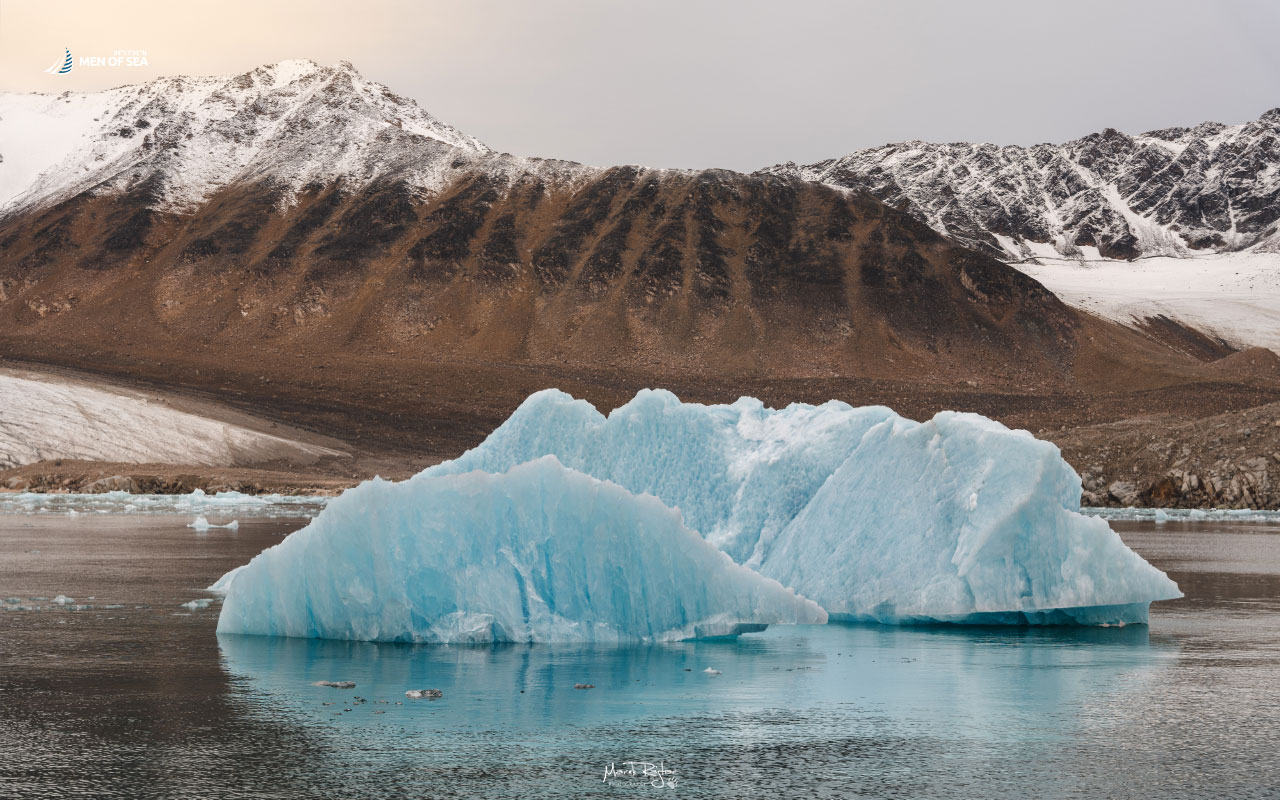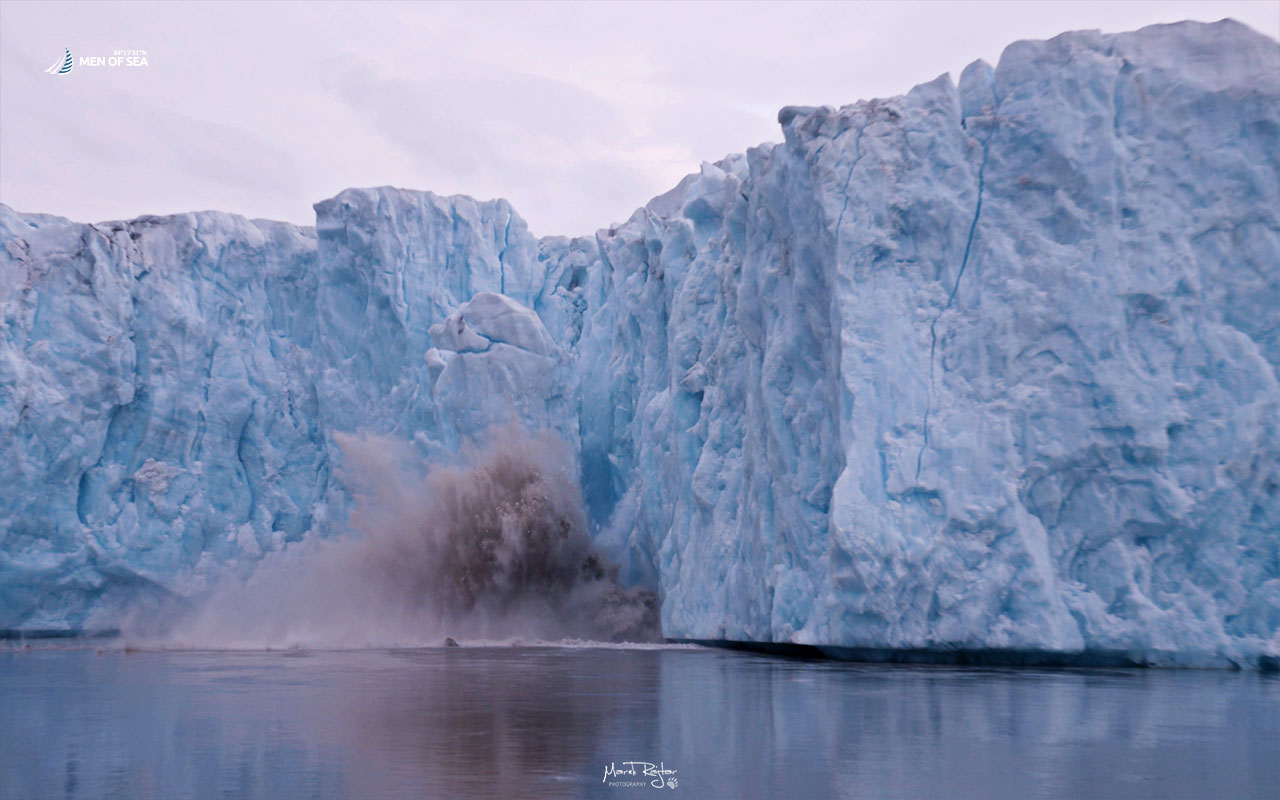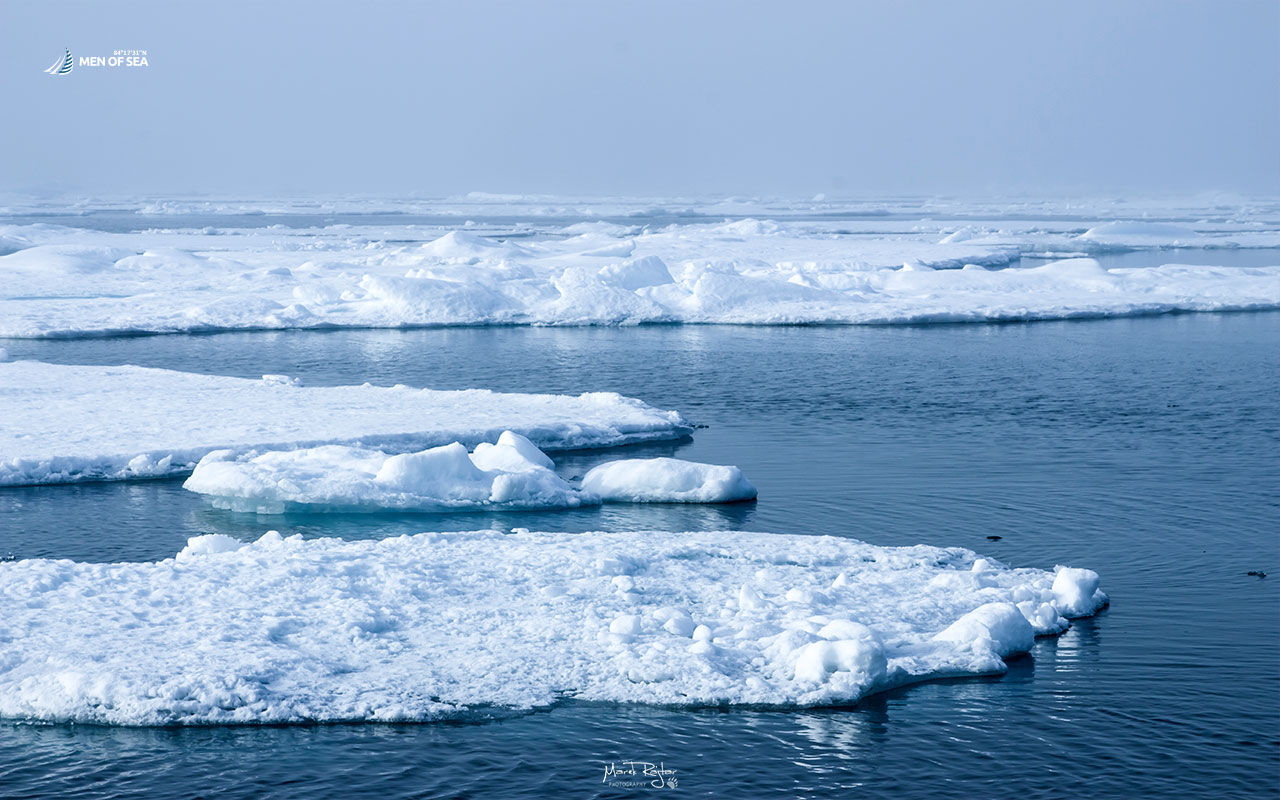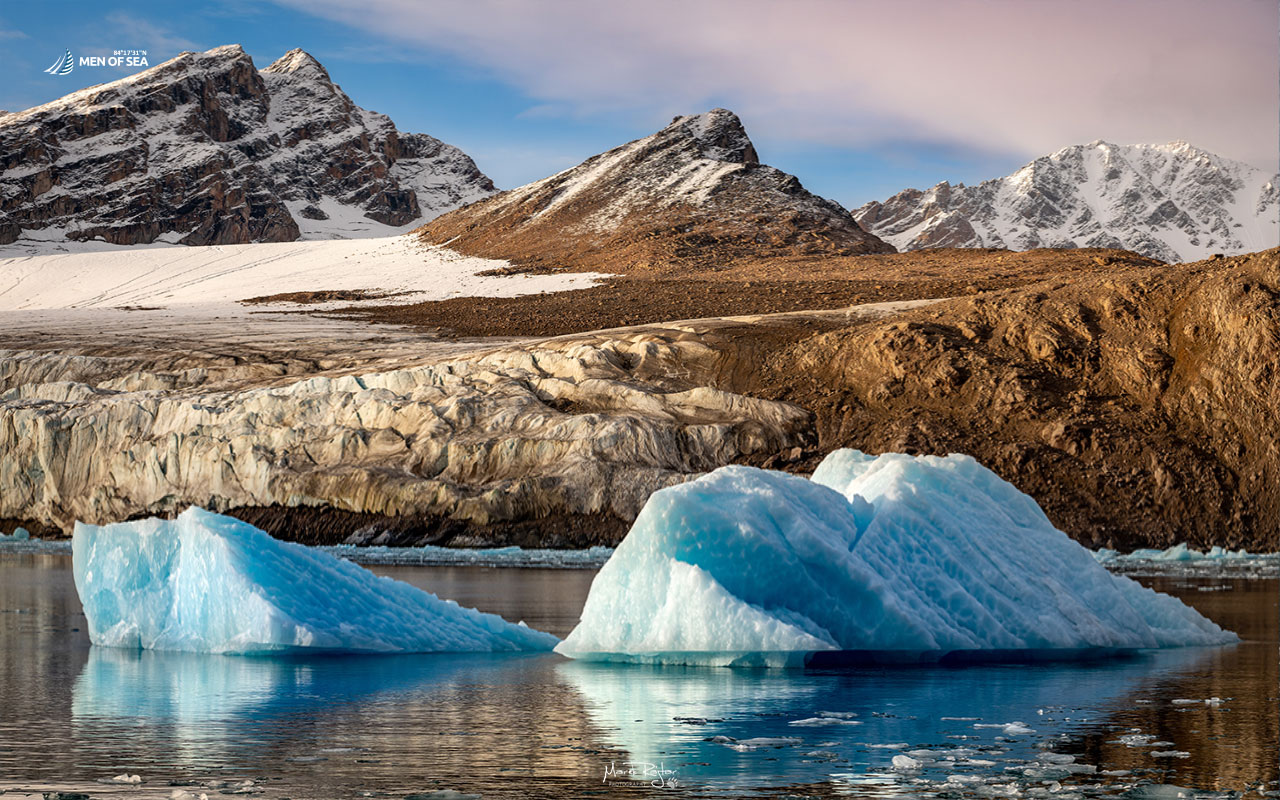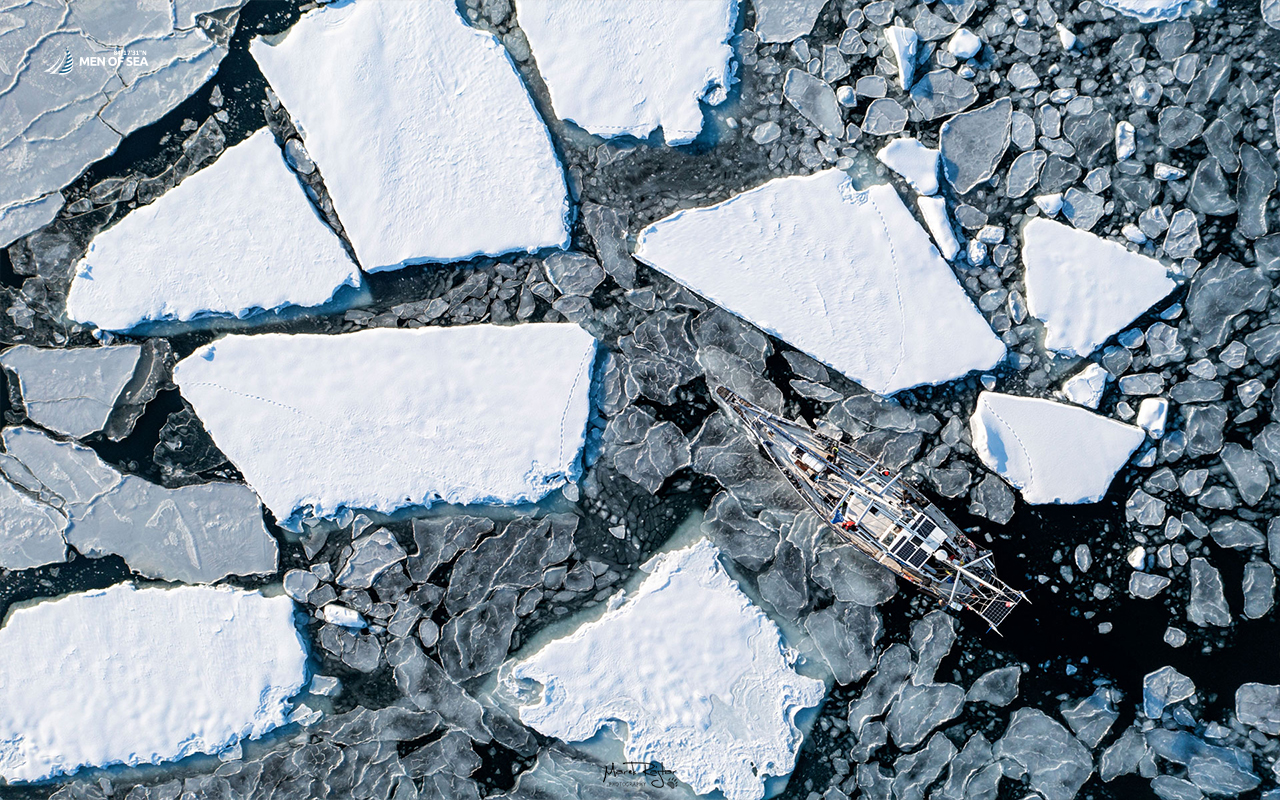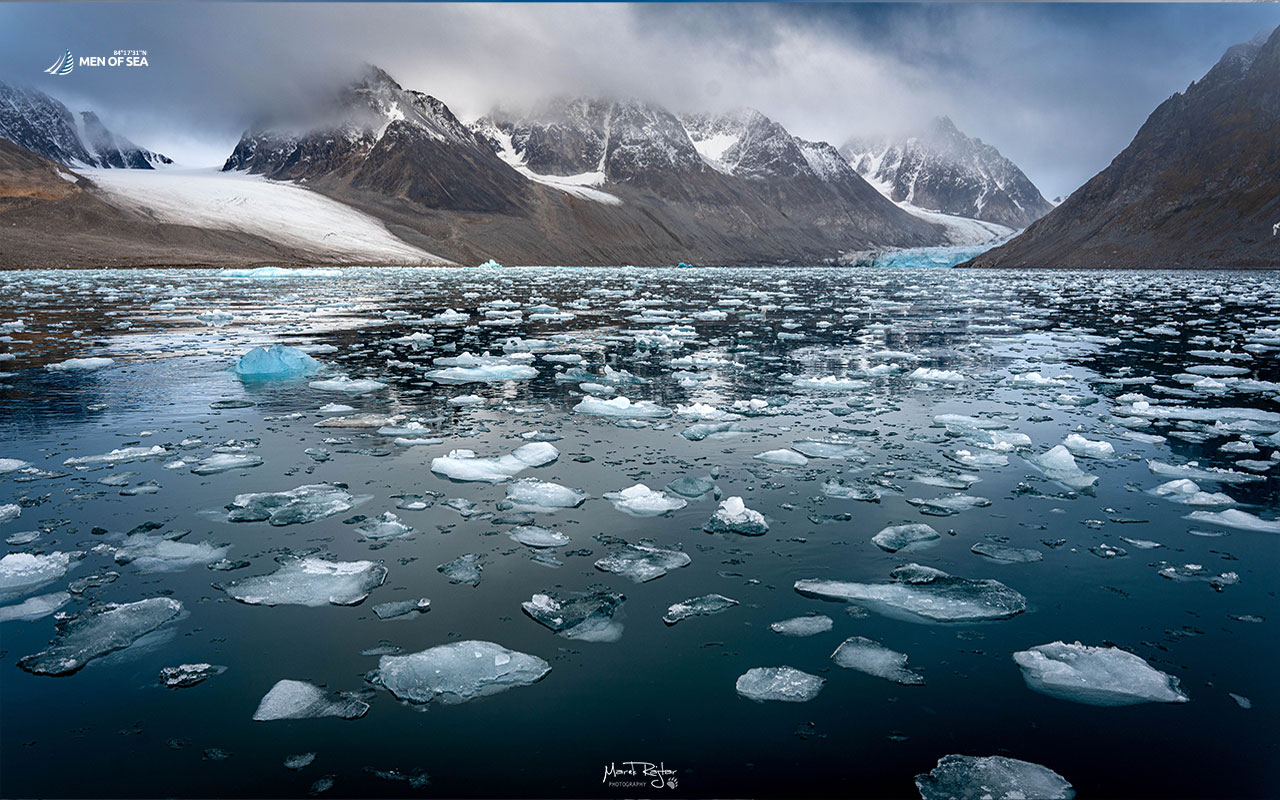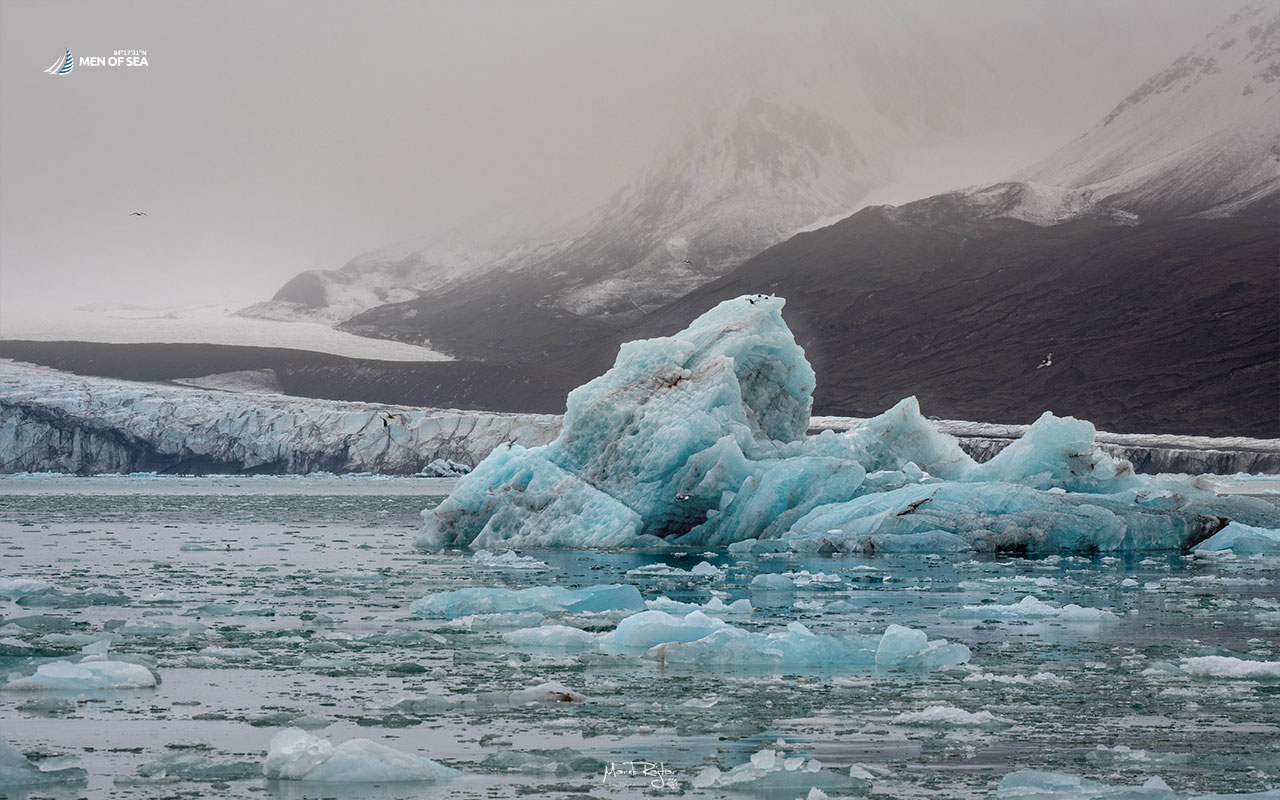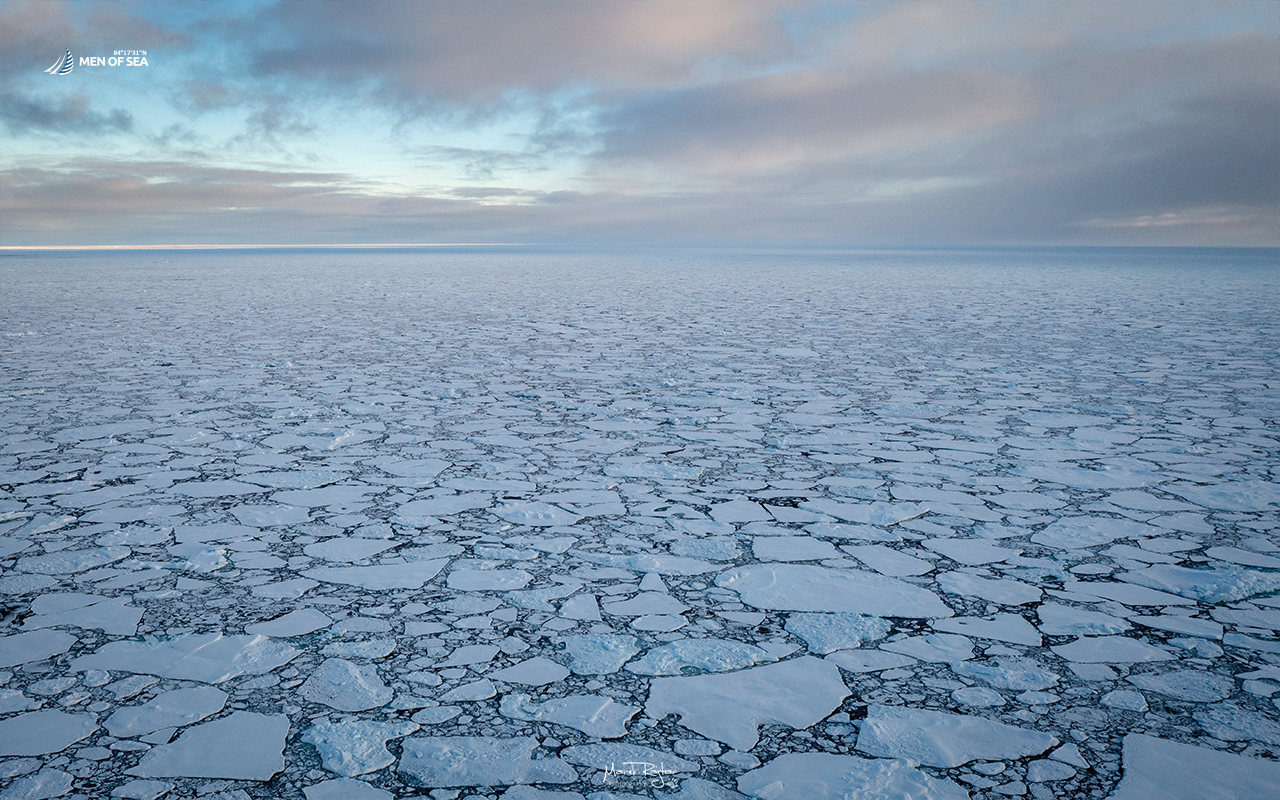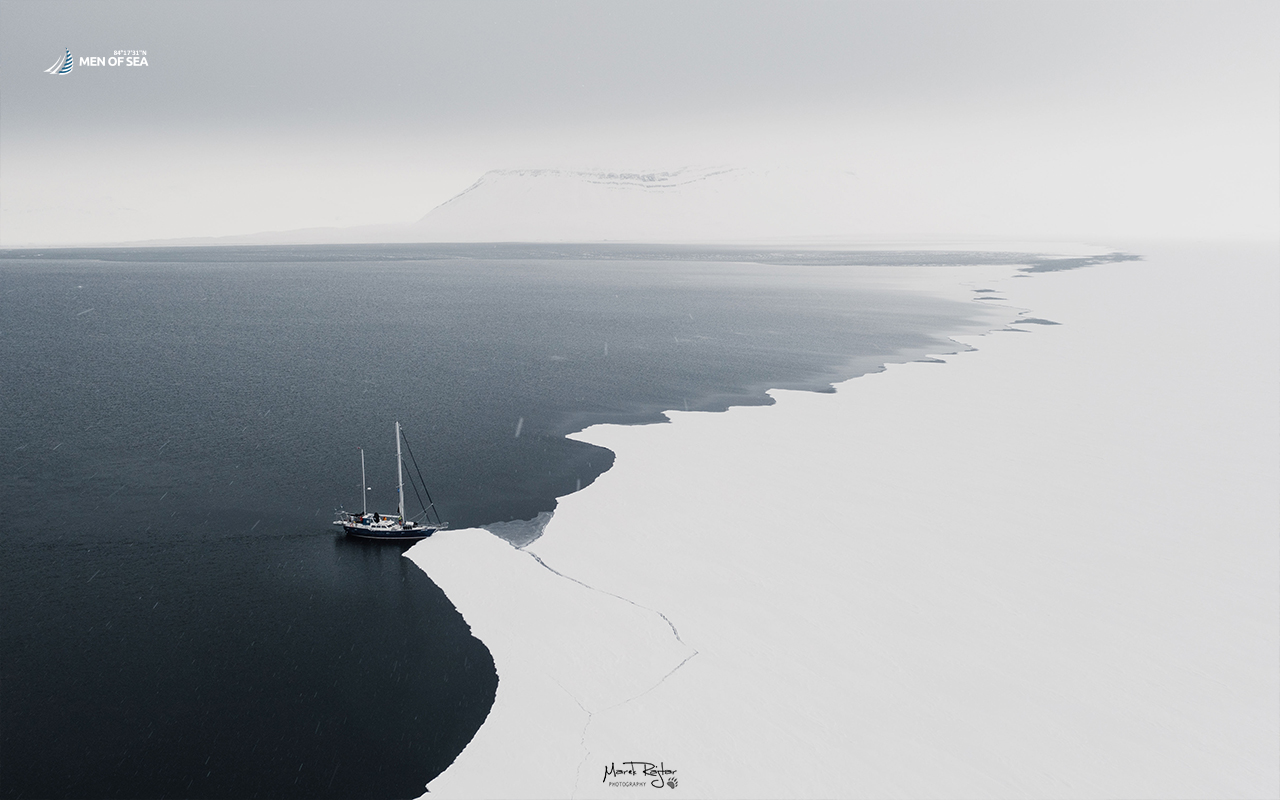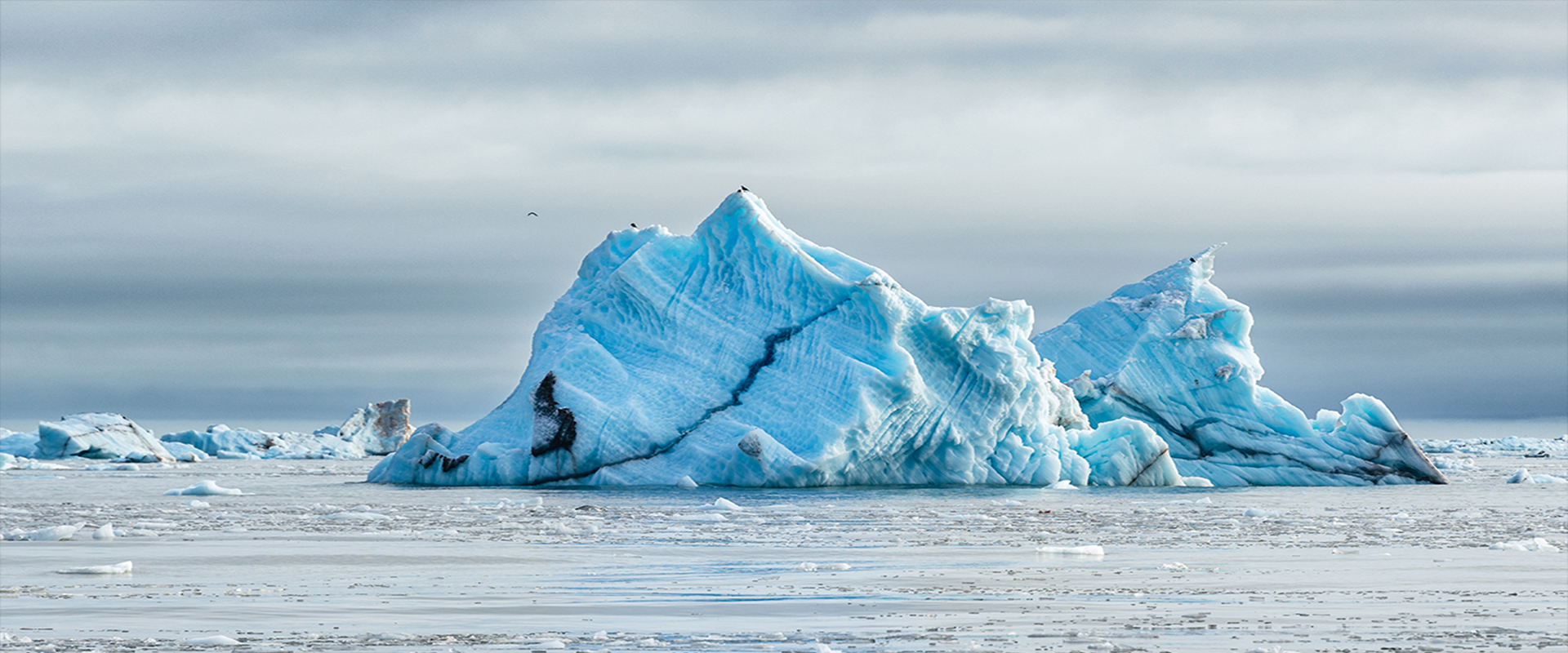
ICEBERGS AND ICE FIELDS
A Land Covered in Ice
BASIC INFORMATION
Icebergs are formed as a result of glaciers calving and are often referred to as “calves”. These are large blocks of ice detached from the glacier’s front, which fall into the sea, settle on shoals, or drift. Ice floats on water because its density is about 10% less than that of the surrounding seawater. As a result, about 80-90% of an iceberg is underwater.
Icebergs are typically white because they are made of ice that reflects light radiation across the entire visible spectrum. However, when a detached block of ice has a uniform structure and high density formed under pressure, red and yellow rays are absorbed, making the iceberg look blue.
The colour of icebergs observed by us also depends on the Sun’s exposure. If the Sun is low on the horizon and some radiation undergoes refraction and absorption, icebergs may appear golden or red. Many times, we have navigated through ice-filled fjords and felt as though we were sailing in a sea of amber. Glaciers traversing the land can carry rocks or soil with them, binding them together, resulting in icebergs having brown and brownish colours.
Icebergs floating on water undergo processes of destruction. The warming sun, temperature changes, erosion, cause them to crumble, resulting in the creation of growlers – ice lumps smaller than icebergs. Subsequent disintegration processes create thousands of smaller ice lumps, which we call “ice slush.”
Ice Fields
In the North Pole region, there is no land, and the entire area is filled with ice fields, also known as ice packs. This is perennial compressed drifting ice that constantly moves, and its quantity varies with each season.
Depending on the degree of compression, we can divide ice into different types: from loosely drifting ice, through compressed ice, to completely compressed ice. The degree of ice compression and its way of movement determine whether it is safe to venture into the ice fields by yacht. We often do so, but such a decision requires a great deal of experience. Ice packs are very dynamic in summer. The ice that “touches” Svalbard in winter and spring loosens up in summer and autumn, allowing navigation in those areas.
Svalbard is reached by a part of the warm Gulf Stream (called the West Spitsbergen Current), but it does not have such an influence as to prevent the waters around Svalbard from freezing. In winter, all waters around the archipelago freeze and ice can even reach Bear Island. Thawing begins in March, but the side fjords of Spitsbergen are largely frozen until May or June.
Ice lying in the fjords is a natural environment for seals, which attract polar bears hunting them.
Navigating amidst icebergs and ice packs is difficult, requiring experience, caution, and attention, but it is an incredible experience for us and for all participants of our trips. Ice is beautiful and magical.
Trips connected with ICEBERGS AND ICE FIELDS
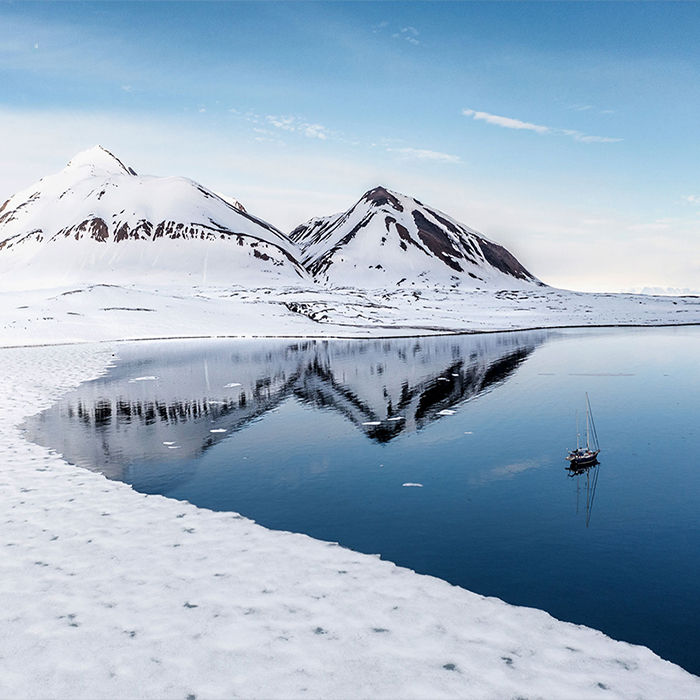
Across the Arctic Seas

12 dni
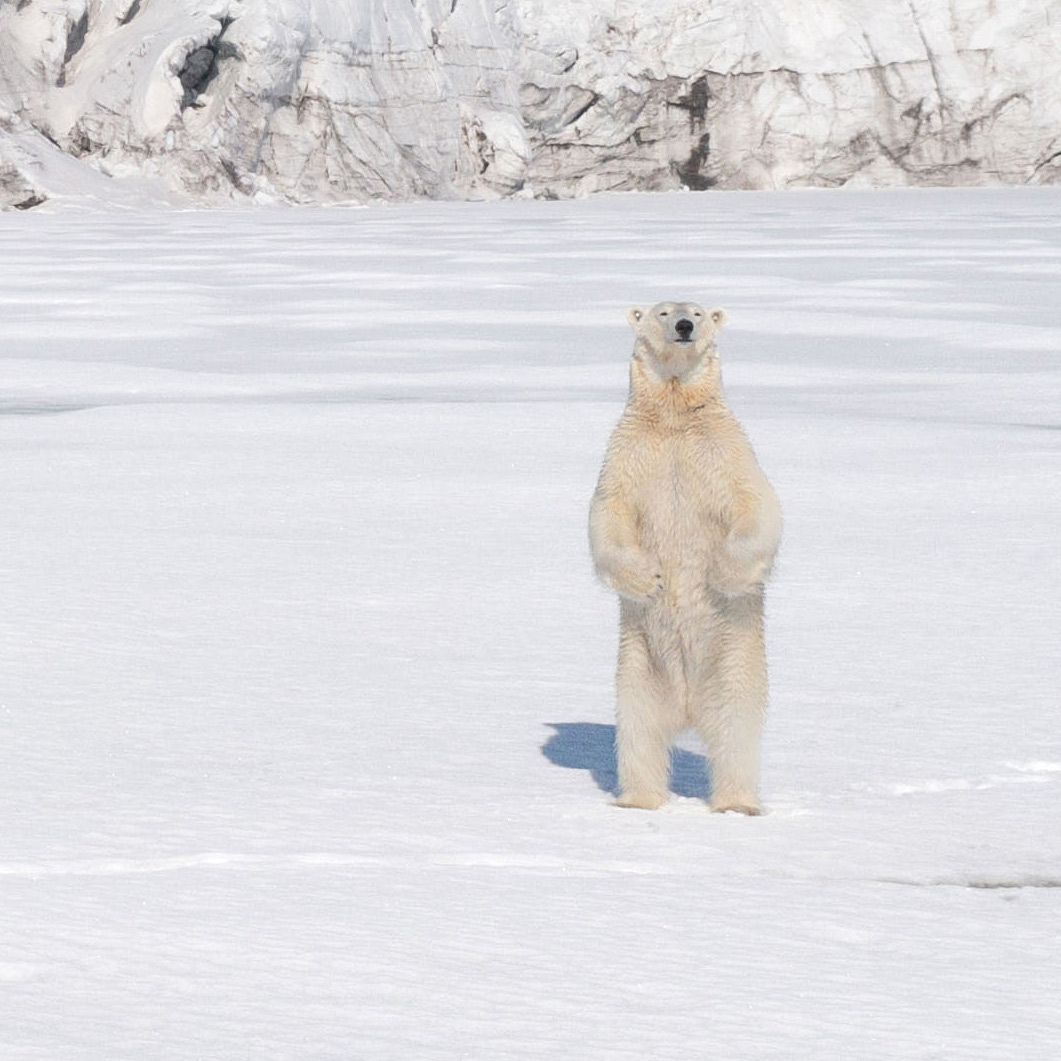
Animals of Svalbard Photo Safari #1

8 dni

Animals of Svalbard Photo Safari #2

8 dni

Animals of Svalbard Photo Safari #3

8 dni
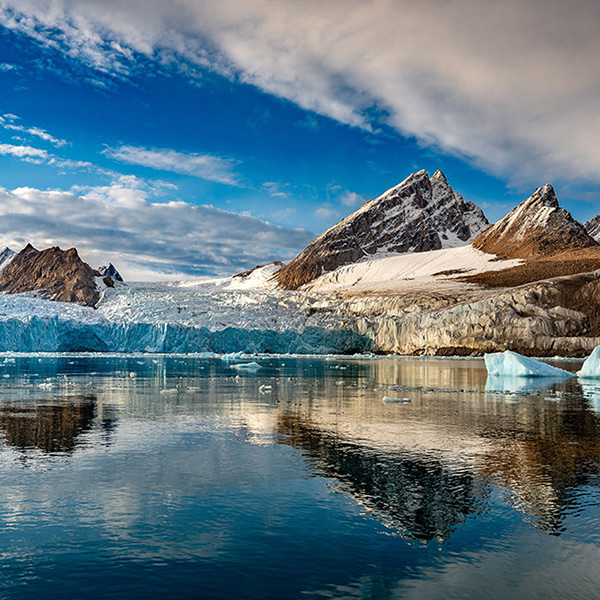
Spitsbergen in a week #5

8 dni
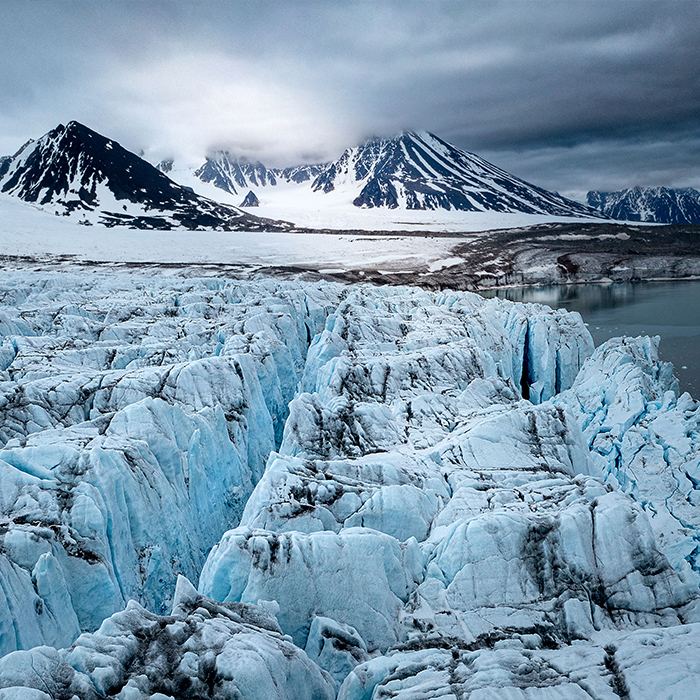
To the Edge of the North #1

10 dni

To the Edge of the North #2

10 dni

Spitsbergen in a week #6

8 dni

To the Edge of the North #4

10 dni

Spitsbergen in a week #8

8 dni
